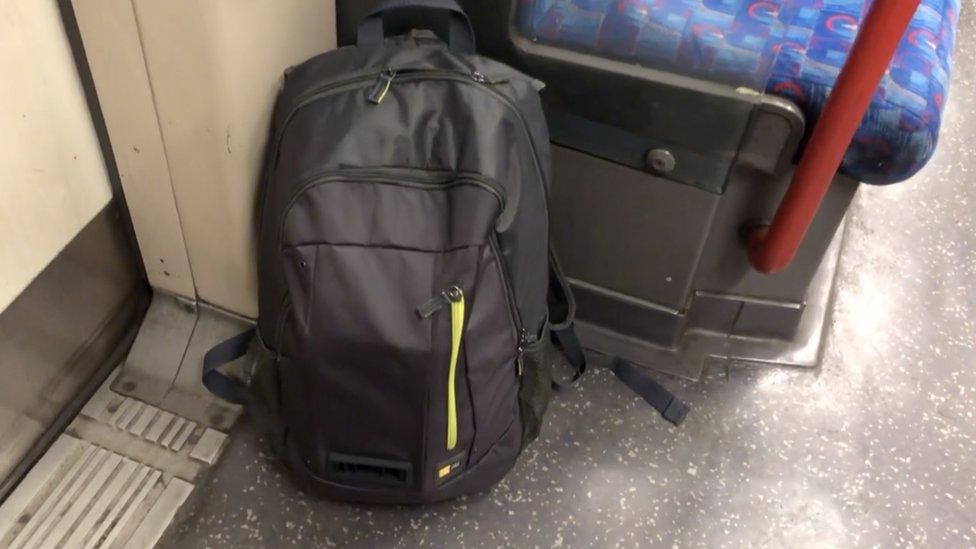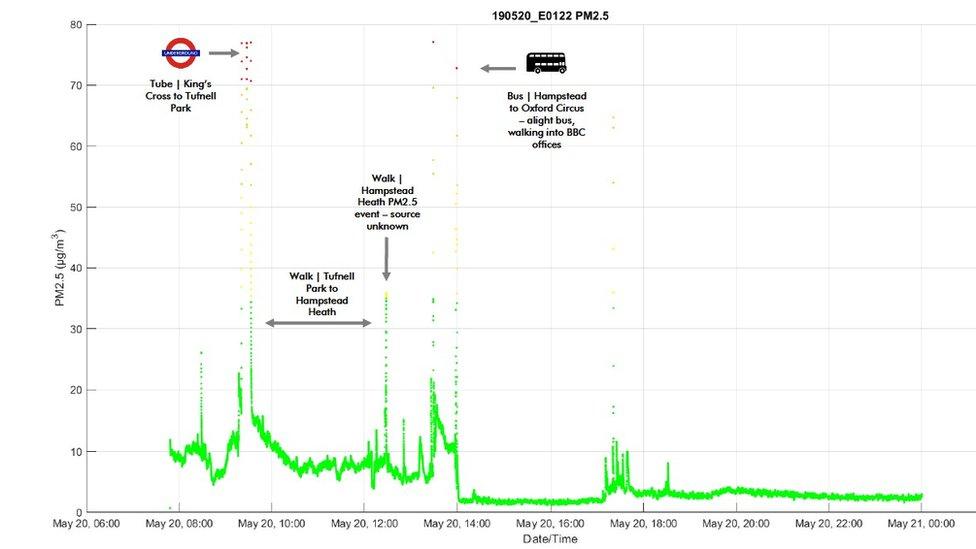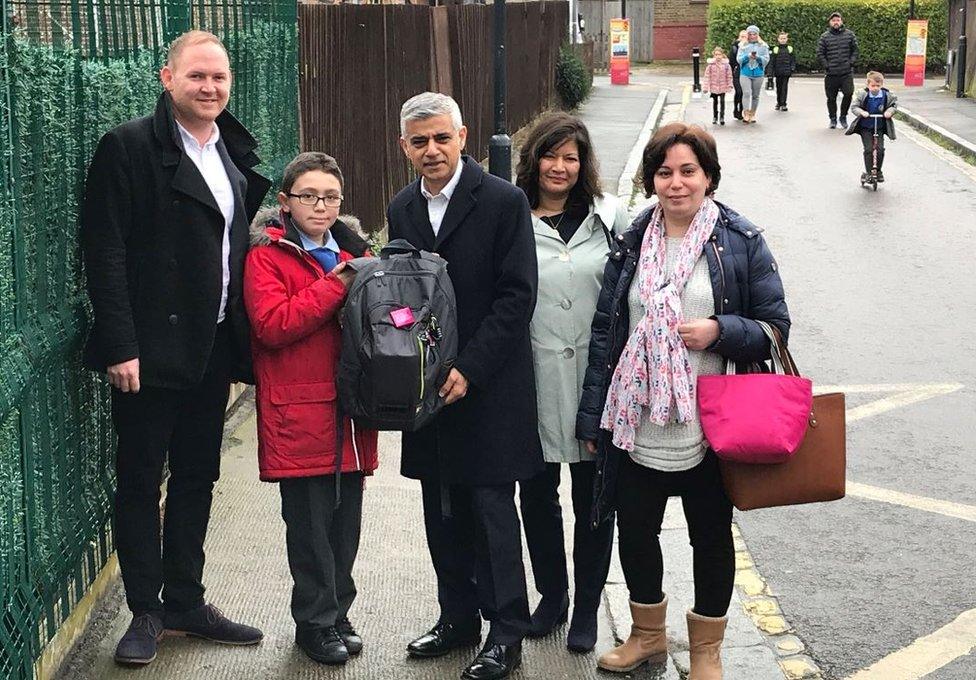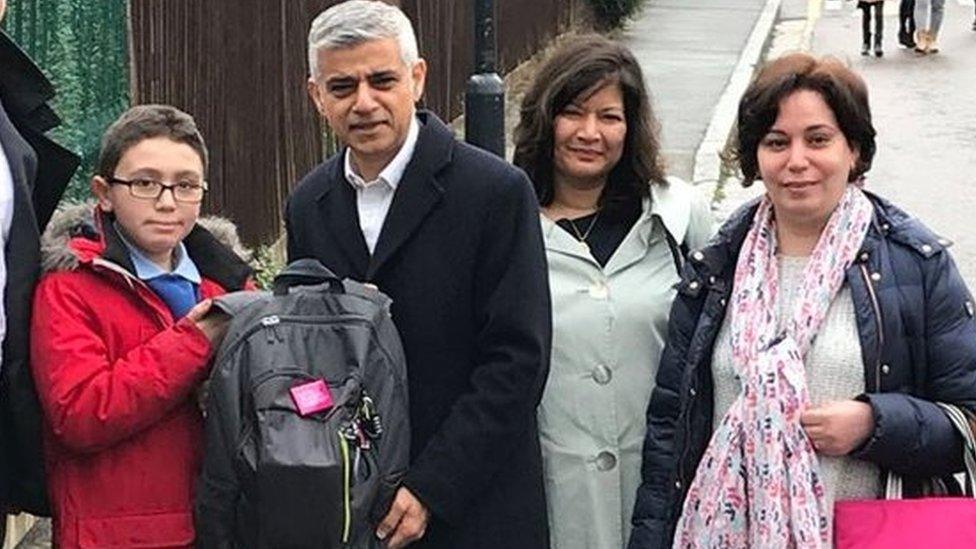Air pollution: How bad is your commute?
- Published
- comments

The pollution backpack measures particles called PM2.5 and the gas Nitrogen Dioxide
A school in south-east London is trialling out backpacks that measure pollution to see how bad it is, so I decided to wear one for two weeks to see how much pollution I was exposed to while working across central London.
I wore a Dyson pollution backpack on the Tube, trains, car and buses while working across central London. I usually try and avoid polluted streets but sometimes I can't avoid them.
The backpack measures tiny little particles called PM2.5 and the gas Nitrogen Dioxide (NO2), which experts think contribute to heart disease, cancer, asthma and strokes.
I have to say the results did shock me.
Tube pollution
The backpack measured a lot of pollution on busy roads but even popping out of my office to buy a sandwich saw the pollution levels spike above recommended levels.
Walking up Oxford Street saw poor air quality for NO2 and it dropped when I walked down side streets.
It was pretty low on Parliament Hill and on Hammersmith Bridge which is shut to motor vehicles.

But the biggest shock was the amount of particulates on the London Underground.
When I got on the Tube the pollution went off the chart and it was also very high at transport hubs like King's Cross.
New backpacks monitor London's air pollution
Dr Ben Barratt, from King's College London, has been working with Dyson. He says the pollution on the Tube is slightly different to the particulates you breathe in outside, as it comes from abrasion and not combustion, meaning it comes from wheels on rails and brakes.
"We don't really know how harmful it is. Some of it is down to chemical composition, some of it is down to size of the particles," he said.
"There's a lot of iron in there and other metals and as yet we still don't know if this is more or less toxic than the kind of dust you're breathing above ground."
He added: "It can't be good. It's something entering your body that shouldn't be there and even in a precautionary way we should try and minimise and reduce."

The mayor launched the backpack pollution scheme in Greenwich earlier this year
The point he makes is I shouldn't be horrified about what the backpack data has shown me.
In fact, it shows there are less polluted areas of London and that there are measures people can take to lessen the exposure to pollution such as walking down side streets.
"Generally we don't want to horrify people," Barratt said.
"What we want to do is make it come alive so they really understand air pollution and the challenges that we face in London."
Jill Collis, Transport for London's director of health, safety and environment, said it closely monitored the dust levels on the Tube.
She said the Underground operated within the Health and Safety Executive guidelines and that it was working towards a stricter target to limit inhalable dust exposures to less than 5mg /m3 and Respirable Dusts to 1mg/m3.
- Published5 April 2019
- Published26 March 2019
- Published19 March 2019

- Published25 January 2017
- Published30 January 2018
